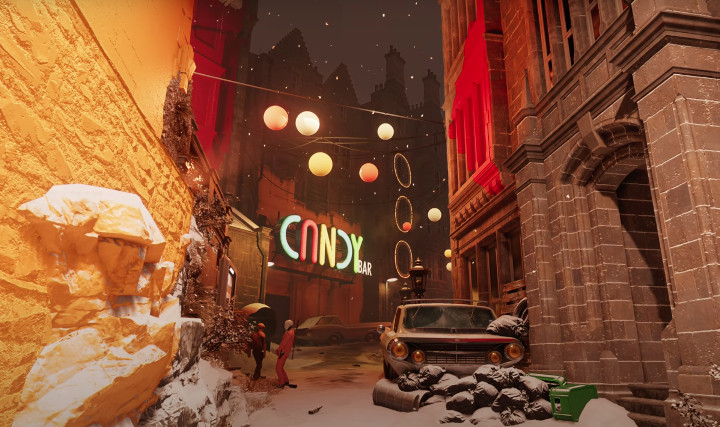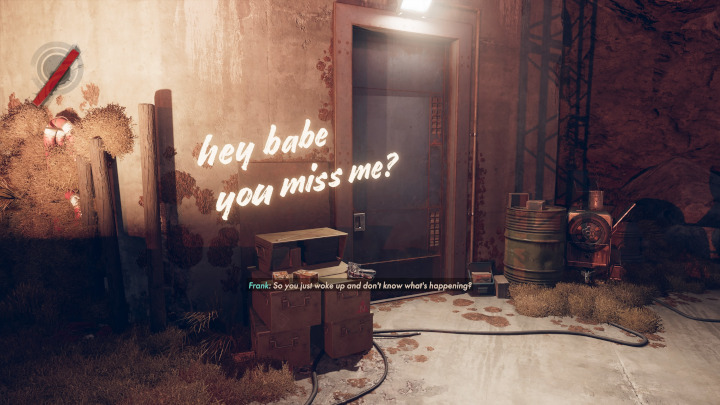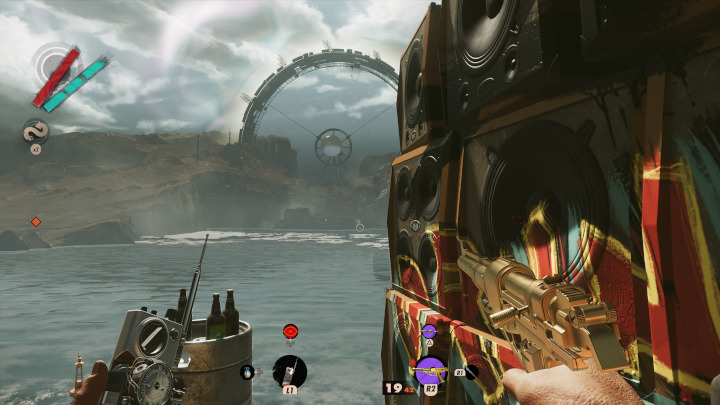
2021 has been a weird year. After the lockdowns of 2020 (and the world very much not yet ready to return to normalcy), time makes less sense than it did in 2019. In fact, it’s hard to keep straight what day of the week it is.
So it’s bizarrely appropriate that one of 2021’s best games uses time as a core game mechanic.
In Deathloop, you step into the shoes of a man named Colt, who’s trapped in a time loop, forced to repeat the same day over and over again. The only way to break the loop is to assassinate eight targets called Visionaries in a single day. If you get seven but miss the eighth, you’ll have to start over from scratch and do it all over again.
Okay, so it’s not completely fair to say “from scratch,” because Colt will remember things from loop to loop (though he won’t remember everything from previous loops). This means you can carry information from one day to the next — enemy locations, secret passwords, etc.
Further, you can carry weapons and “Trinkets” into future loops if you infuse them with a currency called Residuum. So you can spend a lot of time grinding days over and over again to build a ridiculously large arsenal of weapons, modifiers, and superpowers.
Yes, I said “superpowers.” There are Dishonored-style powers that Colt can acquire by obtaining things called Slabs from downed visionaries. And if the Dishonored reference seems misplaced, keep in mind that Deathloop comes from Arkane, who also made the Dishonored games (they like making games that start with D, apparently).

I’ve said this before, but the thing that really makes Deathloop work is the way it very carefully picks and chooses familiar elements and pieces them together in a way that makes them feel fresh. It’s hard to pick out any one thing about Deathloop and say “that one thing has never been done before.” The game liberally borrows from the games that came before it, whether that’s The Legend of Zelda: Majora’s Mask, The Sexy Brutale, or BioShock.
The thing is, a lot of media that borrows from its predecessors can feel reductive, like the creators hit a wall and said, “Well, BioShock did such and such, so we can probably do that too.” Deathloop, on the other hand, feels like every reference was excruciatingly well-thought-out, like the process was more about what specifically works inside the world Arkane meticulously crafted rather than just what worked for other games. The result is a remarkable synergy between elements that are all pulled from vastly different sources.
Yes, there’s some slight of hand here. I think it’s the game’s incredible presentation, more than anything else, that sells this. It commits really, really hard to its 1960s postmodern aesthetic. The game world feels like a constant party, with bright colors and minimalist patterns popping out of every nook and cranny.
This is complemented by really clean font choices. This is mostly Ariel, with Ariel bold in the title screen and italics in captions, but it’s really hard to argue with Ariel when it’s used properly. I’m not sure what the font is for the “writing on the wall,” but it’s also visually clean and easy on the eyes.

One thing that people don’t seem to be talking about is just how good the sound design is in Deathloop. One of my absolute favorite things about the game is how it uses electric guitar sounds to signal enemy states. There’s a low buzz when an enemy is alerted to your presence, and a quick burst of feedback when that enemy is killed. These are really interesting choices that manage to feel both unique and intuitive at the same time. People don’t seem to appreciate just how difficult that sort of soundwork actually is to pull off, and Deathloop does it brilliantly.
In the gaming community at large, there seems to be some controversy over how much praise Deathloop is getting from reviewers. I think that disconnect is largely a matter of how reviewers play games vs. how the general public does. When you casually play Deathloop, it feels immediately familiar, which strikes a lot of people as unoriginal. But when you really sit down to think about it, you realize that what makes Deathloop so great is that it doesn’t try to reinvent the wheel when it doesn’t need to. And, I mean, you wouldn’t give a car a bad review for using wheels that are the same shape as other car wheels, right?
While Deathloop‘s visual style is certainly loud, the things it does best tend to be subtle. Yes, most — if not all — of it has been done before, but it’s hard to fault a game for borrowing an element that feels so intuitive inside its gameplay systems.

Deathloop is much more than the sum of its parts — it’s less about what it does specifically and more about how well it does those things. That makes it hard to quantify, because it’s more of a hodgepodge of ideas that are all handled well than a singular ambitious concept. But there’s nothing wrong with a hodgepodge game — especially when a hodgepodge game ends up being one of the most enjoyable experiences of the year.
And with Deathloop, that’s very much the case.